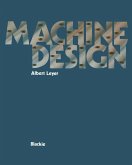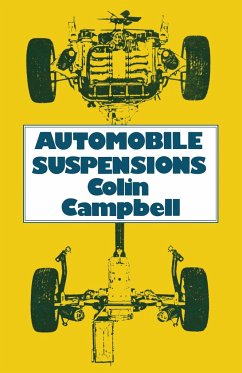1 Preliminaries.- 1.1 The scope of this book.- 1.2 The anatomy of design.- 1.3 The conceptual stage.- 1.4 General aids to design.- 1.5 Combinative methods: tables of options.- 1.6 Rep¿age and reviews.- 1.7 Recurrent problems in design.- 1.8 Combination and separation of functions.- 1.9 Summary.- 2 Structures.- 2.1 Introduction.- 2.2 Structural elements: rods, ties and struts.- 2.3 Beams.- 2.4 Plates.- 2.5 Torsion.- 2.6 Thin-walled pressure vessels.- 2.7 Contact stresses.- 2.8 An example: bathroom scales.- 2.9 Bathroom scales: refinements and details.- 2.10 Springs.- 2.11 Structures, springs, energy and stiffness: pertinacity.- 3 Abutments and Joints.- 3.1 Introduction.- 3.2 The form of abutments.- 3.3 Screwed fastenings.- 3.4 Joints.- 3.5 Stator blade fixing.- 3.6 Joint efficiency.- 3.7 Offset bolted joints: lugs.- 3.8 General principles applied to joint design.- 3.9 Register in joints: intersection problems.- 3.10 Alternating loads on bolted joints.- 3.11 Sealing.- 4 Freedom and Constraints: Bearings.- 4.1 Degrees of freedom.- 4.2 Shafts and bearings.- 4.3 The principle of least constraint: kinematic design.- 4.4 Epicyclic gears.- 4.5 Bearings.- 4.6 Hydrostatic bearings.- 4.7 Hydrodynamic bearings: squeeze action.- 4.8 Hydrodynamic bearings: wedge action.- 4.9 Rolling-element bearings.- 5 Various Principles.- 5.1 Insight and abstraction.- 5.2 Biasing.- 5.3 Force paths.- 5.4 A cylinder head joint.- 5.5 Bevel gear mounting.- 5.6 Gear pump.- 5.7 Nesting and stacking.- 5.8 Guiding principles for choosing nesting orders.- 5.9 Other aspects of nesting.- 5.10 Summary of guiding principles for nesting orders.- 5.11 Flexural elements.- 5.12 Easements.- 6 Materials and Manufacturing Methods.- 6.1 Introduction.- 6.2 Materials, manufacture and design philosophies.- 6.3 The effect of density.- 6.4 Choice of material.- 6.5 Figures of merit.- 6.6 The relation between form and manufacturing method.- 6.7 New materials and processes.- 6.8 Aids to material selection.- 7 Pneumatic Quarter-turn Actuators.- 7.1 Introduction.- 7.2 Fundamental considerations.- 7.3 Aspect ratio.- 7.4 Table of options.- 7.5 Studying a combination.- 7.6 Two good designs.- 7.7 Summary.- 8 Epicyclic Gears.- 8.1 The function of the planet carrier.- 8.2 Increasing the stiffness by asymmetry.- 8.3 Local form design.- 8.4 Joint location and design.- 8.5 ¿Alexandrian¿ solutions.- 8.6 The choice of embodiment.- 8.7 Another solution.- 8.8 Other aspects of epicyclic gearing.- 9 Hydraulic Pumps.- 9.1 The swash-plate pump.- 9.2 Valve plate design.- 9.3 Eliminating the valve plate.- 9.4 Virtues and limitations of the swash-plate pump.- 9.5 The bent-axis pump.- 9.6 An elegant bent-axis pump.- 9.7 Combining the virtues of swash-plate and bent-axis.- 10 Miscellaneous Examples.- 10.1 Connecting rods.- 10.2 A suitcase handle and a suspension arm.- 10.3 A window stay.- 10.4 The Challenger disaster.- 11 The Principles of Design.- 11.1 An emerging discipline.- 11.2 Least constraint and kinematic design.- 11.3 Separation and combination of functions.- 11.4 Design mating surfaces or abutments.- 11.5 Clarity of function.- 11.6 Short direct force-paths.- 11.7 Matching and disposition.- 11.8 Nesting order and related principles.- 11.9 Avoiding arbitrary decisions: combining good features.








